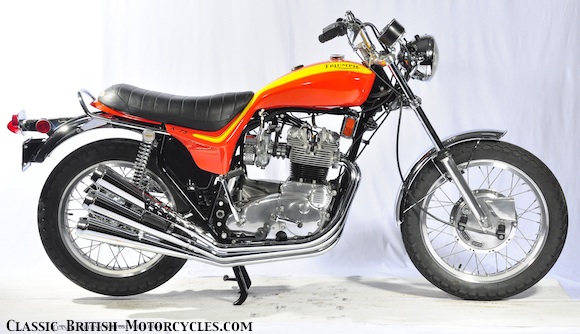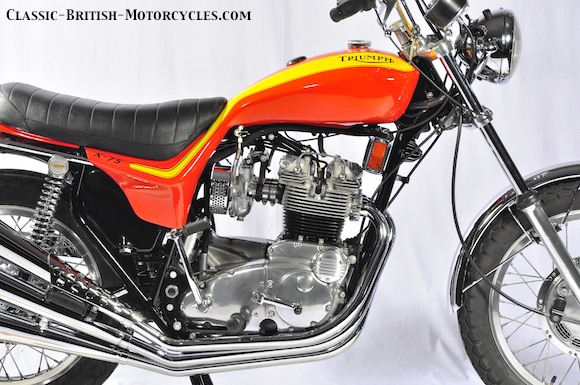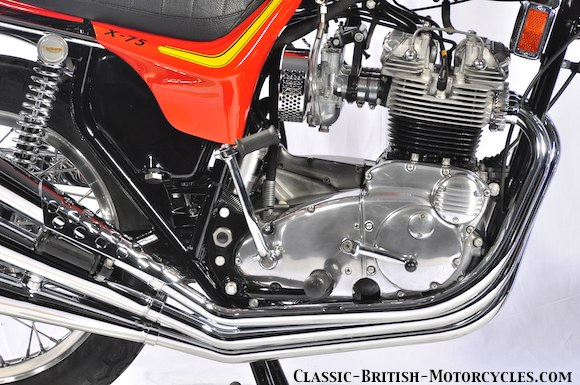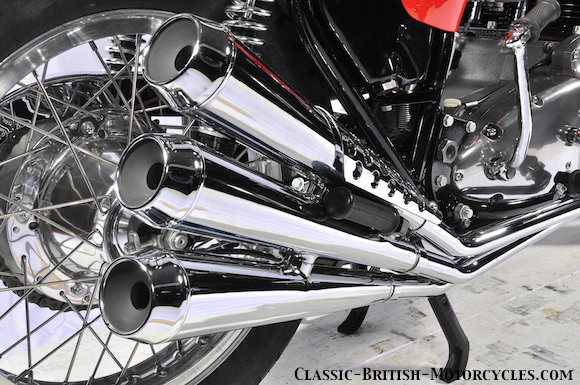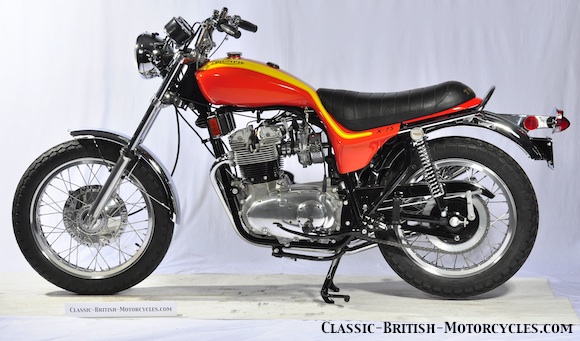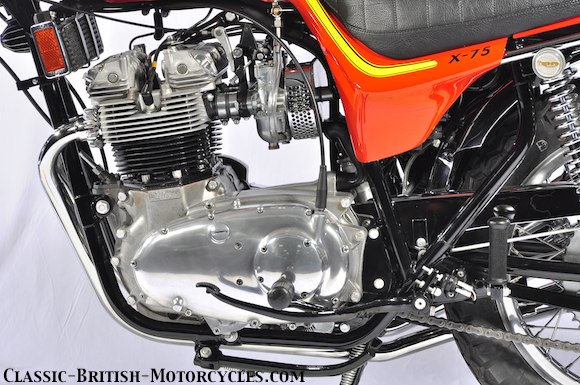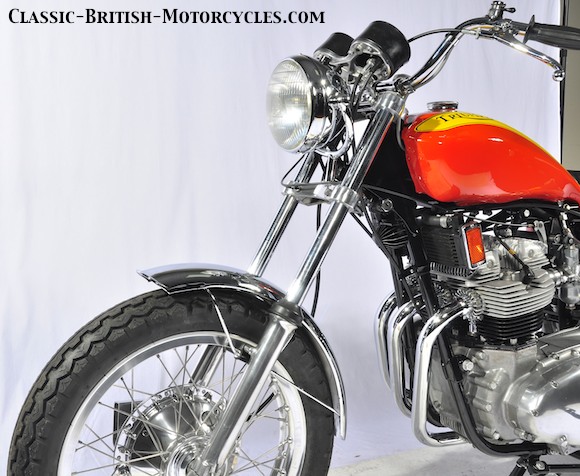THE 1973 TRIUMPH X75 HURRICANE
As an interesting aside to the Triumph Trident / BSA Rocket 3 story is the X75 Hurricane. Having insisted on a slightly different 3-cylinder engine from the Triumph’s, BSA wanted to make an impression and show their dealers something exciting for a change, and something that Triumph couldn’t match. There was a lot of internal rivalry within the BSA empire at that time. They were hoping to come out with what would be called today a ‘halo’ model, one that would get buyers into the showrooms and show the world that BSA still had game. So, they contracted American fairing pioneer, Craig Vetter, father of the Windjammer fairing, to take a BSA Rocket 3 back to his shop & customize it.
WOW!!!!!!!!!
And what a customizing job he did! He took the stodgy BSA and restyled it completely with a swoopy new one-piece fiberglass tank/seat combo that flowed into an integrated rear fender. The paint scheme was wild: bright orange with a bold yellow stripe. The front forks were extended, per current chopper practice, and most impressive of all, were a wild set of 3 upswept exhaust pipes that ran along the right side of the bike. STUNNING! It all flowed together like nothing anyone had ever seen before. While grossly impractical (with tiny gas tank & extended forks) it had the sex appeal to be a real hit.
ANOTHER STINK BOMB
But alas, once again, BSA managed to turn a potential hit into yet another dud. BSA’s mounting internal problems, among other things, delayed launch of the A75 Hurricane (BSA nomenclature) so long that when it was finally released, BSA was no longer selling motorcycles, so it had to be rebadged as a Triumph anyway! It was identical to the BSA branded bike with the exception of the name change to the 1973 Triumph X75 Hurricane.
IRONY OF IRONIES
So, in the end, the bike that was supposed to ‘one-up’ Triumph actually became a Triumph. But built entirely of BSA parts. The BSA engine, with it’s 12-degree inclined barrels and the twin downtube BSA frame differed greatly from those used on the Trident. But, BSA was now closing its doors and found itself in possession of a huge stock of BSA engines, frames and other parts left over when BSA production was halted. So, in one of their more clever moves, they used the last of these parts to build what was to be the first batch of Hurricanes, under the flag of Triumph.
THE END IS NEAR
It was a good plan, but too little too late. And once again, at a price that was too high for most buyers. And, its most impressive feature, those wild pipes, ended up being the final undoing of the 1973 Triumph X75 Hurricane, when they couldn’t be made to pass new noise laws in the US. Just 1,152 Triumph Hurricanes were built (1973 model year only), making this not only one of the most exciting Classic British Motorcycles, but also one of the rarest.
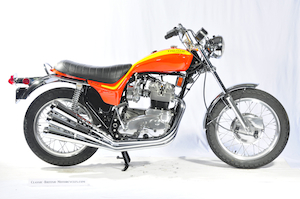
A one-minute walk-around up close & personal with this full-restored, totally factory-correct ’73 X-75 Hurricane. They don’t get any nicer than this.
1973 Triumph X75 Hurricane SPECIFICATIONS
|
Model Designation Number produced Engine type Displacement Bore & Stroke Compression ratio Carburetors Engine output Electrics Ignition Primary drive Clutch Gearbox Ratios, overall: 1st, bottom 2nd 3rd 4th, top Final drive Frame Suspension, front Suspension, rear Brake, front Brake, rear Tire, front Tire, rear Weight |
1973 Triumph X-75 Hurricane 1,172 Air-cooled OHV inline 3-cylinder 741cc / 45 ci 67mm X 70mm 9.0:1 3- Amal Concentrics, 27mm 58 bhp @ 7,500 rpm 12V alternator 3 Breakers & 3 Coils Triplex chain Single diaphragm, dry 4-speed constant-mesh, right foot-shift 11.95:1 8.30:1 5.83:1 4.89:1 Single-row chain Twin cradle Telescopic Swing-arm w/2 dampers 8″ TLS drum, conical hub 7″ SLS drum, conical hub 3.25″ X 19″ Dunlop ribbed 4.00″ X 18″ Dunlop universal 458 lbs |


